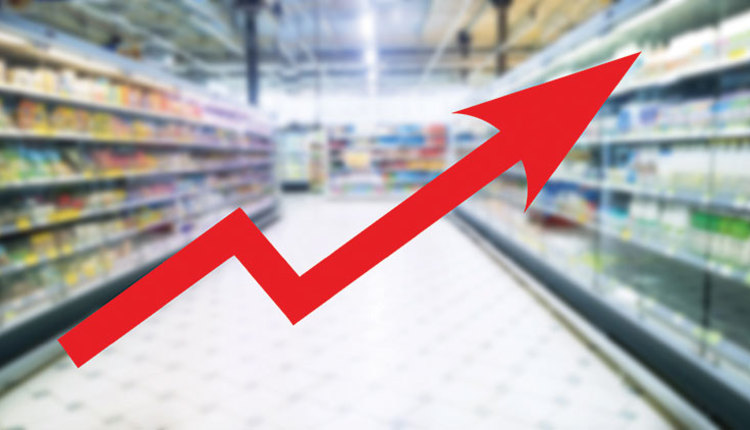The author is a senior director for strategic advisory solutions with Ever.Ag.

In recent months, Class III markets have been in a free fall as June Class III milk prices are tracking to the lowest levels since 2020. As this situation has unfolded, prices for cheese and dry whey on the CME have fallen to levels that are comparable to the early days of the pandemic. The sentiment in the broader industry has turned almost equally as negative.
Overall, dairy product prices have dropped to levels that, when we started the year, were supposedly untouchable. In an environment with inflatioxnary pressures and historically elevated feed costs, some analysts had claimed dairy markets had undergone a “structural change” and reached a “new normal” of higher prices.
This prediction is not standing the test of time. Instead, many farmers — including those who stored the most expensive feed ever in their bunks — are now pulling aggressively on operating lines. As this is taking place, they are asking us, “What has sunk markets?”
Supply is not the culprit
U.S. milk production was only up a half percent in April. That’s well below the long-term average of around 1.2% growth. European milk supply growth also has been relatively muted, below 1% since the start of the year — a level that actually suggests a moderately contracting dairy herd.
The future for milk supplies globally is also not bright. Compressing farm-level margins around the world are expected to keep overall production in check throughout the rest of the year.
Booming cheese manufacturing, as of this moment, is not the cause of declining prices. In part because of pandemic-related delays and the sky-high price of steel over the last few years, few manufacturers have finished cheese plant expansions or constructions in 2023.
To that end, total U.S. cheese production was only up 1% in the first quarter. That said, more cheese manufacturing will become a factor around July when a brand new cheese plant in Dumas, Texas, begins scale production of Cheddar cheese.
If surplus supplies have not yet been the problem, then there is a far more worrying specter driving dairy markets lower. One that will stick around for far longer: We must be seeing cracks in dairy demand.
From our domestic-facing contacts, we are told that there’s more than enough product to go around, and for the first time in a long time, consumers are finally slowing purchases in response to retail price hikes. For virtually all of last year, consumers did not balk at soaring prices. Last year, many retailers were lifting prices by double-digits and purchasing continued to grow. Large consumer-packaged goods companies had bragged in their earning reports about fast-growing sales, largely the product of much-higher prices.
Now, the environment has changed. Consumers have slowed purchases.
An additional piece of evidence pointing to demand weakness: Last week, USDA issued a surprise solicitation to buy cheese for U.S. feeding programs. In response, the market moved higher for just one day. As my mentor Jerry Dryer would say, “If a market doesn’t rise on bullish news, it must be bearish.”
A view from Europe
Notably, the price-negativism in dairy markets has been contagious to other parts of the world. In late May, we were in Poland at a European dairy conference. There, dairy merchants were also lamenting demand. In hallway conversions they talked about a financially weaker European consumer that had slowed purchasing.
On the main stage, speakers reported sluggish international inquiries and a “still-quiet China.”
The common market wisdom in Europe? Markets will firm later this year. But as Jim Rogers wrote, “Never act upon wishful thinking. Act without checking the facts, and chances are that you will be swept away along with the mob.”
Inflation takes a bite
Given the convergence of so many demand issues in different places around the globe, there must be a macroeconomic issue at play. More specifically, consumers are getting crunched by the economic environment, including falling wages — which accounts for the impact of inflation.
Last month, inflation in Europe climbed by more than 8%. Some countries are experiencing dramatic inflation, including Hungary (+24%), Poland (+13%), and Sweden (+11%).
As people experience real reductions in incomes, they spend less money on discretionary items and become more price sensitive. Right now, we’re seeing that throughout the world, including in the U.S., Europe, and Asia.
What will firm this market? The cure to low prices is low prices.
Currently, farmers are struggling to make ends meet. Historically, it takes about six months of consecutive negative margins to produce a negative supply response, and by our count, average margins have been in negative territory since February. This situation would suggest milk supplies will begin contracting in August.
So far, we have yet to identify a material enough uptick in the number of farms that are headed to the auction block. We believe challenging farm-level economics will persist throughout at least the summer months.
Supply chains are healing
If there is a silver lining to be found, it’s in the normalization of supply chains. No longer are we hearing about dramatic shortages of packaging, cleaning supplies, transportation, or labor — for which there were unbelievable stories for much of the past two and half years.
In response to more reliable supply chains, we are seeing dairy brands de-stock and carry fewer days of inventory in warehouses. From a market perspective, the de-stocking means current consumption is exceeding dairy manufacturers’ commodity sales. In other words, the current market weakness is overstated.
Even still, today there is a demand problem, which puts the dairy industry in a difficult situation. Falling demand and stable supplies are suppressing farm gate prices.
In time, markets will solve this problem. But until then, farmers will need to weather this storm.







